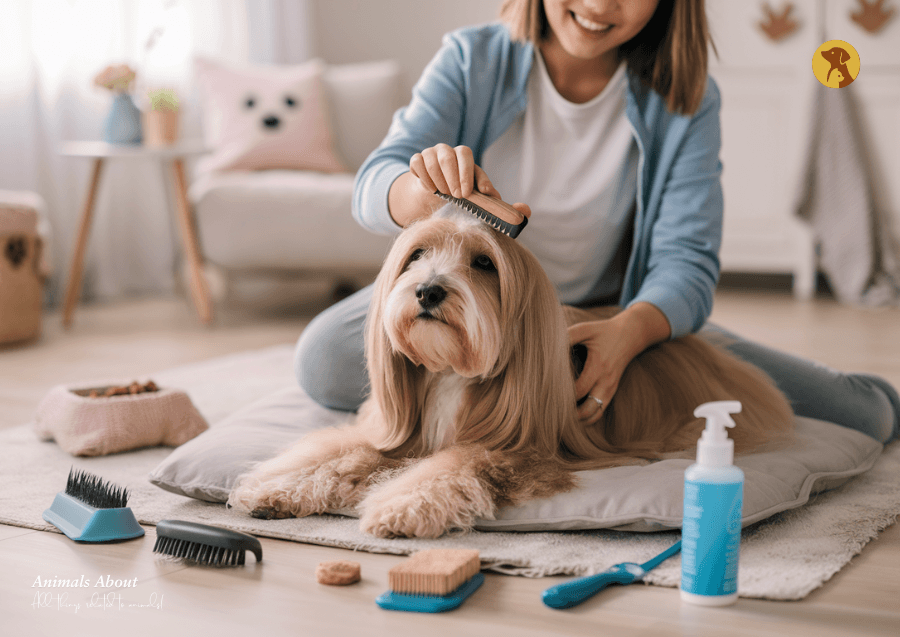Senior Pet Care Tips for a Happy Home Life

As our furry companions enter their golden years, their needs shift, but their love remains unwavering. Caring for an aging pet can feel overwhelming, but with practical senior pet care tips, you can ensure they live a comfortable, joyful life at home. Whether you have an aging dog or an older cat, these senior pet care tips will help you support their health, mobility, and happiness. Let’s dive into creating a loving environment with elderly pet care that’s simple, heartfelt, and optimized for senior pet wellness. Recognizing Pet Aging Signs : Early Senior Pet Care Tips Effective senior pet care tips start with understanding the signs of aging. Most pets become seniors around 7–10 years old, though this varies by breed and size. Smaller dogs may age more slowly, while larger breeds show pet aging signs earlier. Look for symptoms like: These signs are normal for aging dog health or older cat care, but they signal it’s time to adapt your approach. A vet checkup for older pets can confirm your pet’s needs and guide you toward the best senior pet care tips for their health. Crafting a Senior Pet Wellness Routine A consistent senior pet wellness routine is key to applying senior pet care tips effectively. This routine should blend nutrition, exercise, grooming, and emotional care to meet your pet’s evolving needs. Here’s a daily plan for home care for senior pets: This routine, built on senior pet care tips, provides structure and comfort. Adjust it based on your pet’s unique needs, and consult your vet for personalized advice. Nutrition for Senior Pets Nutrition is a cornerstone of senior pet care tips for senior dog nutrition and older cat care. As pets age, their metabolism slows, requiring fewer calories but more targeted nutrients. Here’s how to optimize their diet: For picky eaters, warm food slightly or add vet-approved toppers to make meals appealing. Regular vet checkups for older pets ensure their diet aligns with senior pet care tips. Managing Pet Arthritis and Mobility Pet arthritis is a common challenge for senior pets, causing stiffness and discomfort. Incorporating senior pet care tips for mobility can make a big difference. Here’s how to provide mobility support for pets: Monitor your pet’s weight, as excess pounds worsen arthritis. A warm, draft-free environment also supports joint comfort, aligning with senior pet care tips. Adapting Your Home: Senior Pet Safety and Comfort Tips Adapting your home for senior pets is a practical way to apply senior pet care tips. Small changes enhance safety and comfort for in-home care for aging pets: These adjustments create a supportive environment, reflecting senior pet care tips for a happy home. Dental Care for Senior Pets Dental care for senior dogs and cats is critical yet often overlooked. Poor dental health can cause pain, infections, and systemic issues. Use these senior pet care tips to keep their teeth healthy: Request a dental exam during vet checkups for older pets to catch problems early. A healthy mouth supports their ability to eat and maintain aging dog health or cat wellness. Emotional Support for Older Pets Senior pets thrive on love and routine, and emotional support for older pets is a vital part of senior pet care tips. Here’s how to nurture their emotional well-being: Your presence is a powerful tool for keeping your pet happy, aligning with senior pet care tips. The Role of Regular Vet Checkups Vet checkups for older pets are essential for applying senior pet care tips effectively. Schedule visits every six months to monitor for conditions like: Your vet may recommend bloodwork, urinalysis, or imaging to track your pet’s health. These visits also allow discussions about supplements for older pets, pain management, or dietary changes. Proactive care ensures your pet enjoys a high quality of life. Final Thoughts on Senior Pet Care Caring for a senior pet is a beautiful way to honor the love and joy they’ve brought into your life. By embracing these senior pet care tips, you can help your aging dog or cat thrive at home. From senior dog nutrition and managing pet arthritis to adapting your home for senior pets and offering emotional support for older pets, every action counts. Stay diligent with vet checkups for older pets, prioritize dental care for senior dogs, and maintain a consistent senior pet wellness routine. For more ways to keep your pet happy, explore additional resources on Animals About. Let’s make every moment with our senior pets shine!
Remove Matted Pet Fur Safely at Home

As a devoted pet parent, nothing tugs at your heartstrings more than seeing your furry companion struggle with matted fur. Not only does it make them look unkempt, but matted pet fur can cause discomfort, skin irritation, and even infections if left untreated. The good news is that you can remove matted pet fur safely and gently at home with the right tools, techniques, and a sprinkle of patience. This comprehensive guide will walk you through everything you need to know about detangling pet hair, offering pet grooming tips to keep your dog or cat’s coat healthy, shiny, and mat-free. Whether you’re dealing with tangles in dog hair or cat fur mat removal, our vet-approved grooming tips will help you master home pet grooming and ensure your pet stays happy and comfortable. Why Mats Form in Pet Fur Before diving into how to remove matted pet fur, it’s important to understand why mats form in the first place. Mats occur when loose fur, dirt, dander, or oils clump together, creating tight knots that are difficult to brush out. This is especially common in long-haired pets, such as Persian cats, Maine Coons, Golden Retrievers, or Afghan Hounds. However, even short-haired breeds can develop mats in areas with frequent friction, like under the collar or between the legs. Several factors contribute to a matted coat: Untreated mats can pull on the skin, causing pain, restricting movement, and even leading to hot spots or infections. By learning safe fur removal techniques, you can prevent fur matting and maintain your pet’s pet fur care routine. Plus, home pet grooming is a wonderful way to bond with your furry friend and keep them feeling their best. Essential Tools for Remove Matted Pet Fur To remove matted pet fur effectively, you’ll need the right fur mat removal tools. Investing in high-quality grooming tools makes brushing tangled fur easier and safer for your pet. Here’s a list of must-have items for home pet grooming: Pro tip: Always opt for vet-approved grooming tips and tools to ensure your pet’s safety. If you’re new to grooming, consult your veterinarian or a professional groomer for recommendations on the best fur mat removal tools for your pet’s breed and coat type. Step-by-Step Guide to Safely Remove Matted Pet Fur Follow this detailed process to remove tangles from dog hair or tackle cat fur mat removal at home. Patience and a gentle touch are key to making home pet grooming a positive experience for both you and your pet. Create a Calm Environment Start by setting up a quiet, comfortable grooming area. Lay down a non-slip mat or towel to keep your pet secure. Spend a few minutes petting your pet and offering treats to help them relax. If your pet is nervous or sensitive to grooming, break the session into short intervals to avoid stress. Pet hygiene and grooming should feel like a loving ritual, not a chore. Inspect the Mats Gently run your hands over your pet’s coat to locate matted areas. Common trouble spots include behind the ears, under the armpits, around the tail, and along the back legs. Check for mats close to the skin, as these can be more painful to remove. If you notice redness, swelling, or a bad odor, stop grooming and consult a vet, as this could indicate an infection. Apply a Detangling Spray Lightly mist a pet-safe detangling spray onto the matted area. This softens the fur and makes it easier to get rid of matted fur without pulling. Let the spray sit for 1-2 minutes to loosen the mat. Avoid over-saturating the fur, as too much moisture can worsen tangles. Work with a Dematting Comb Hold the mat at its base, close to the skin, to minimize pulling. Using a dematting comb for pets, start at the outer edges of the mat and work inward with short, gentle strokes. The serrated blades will carefully cut through the mat without harming your pet. Be patient—rushing can cause discomfort. If the mat is too tight, don’t force it; try the next step instead. Brush with a Slicker Brush Once the mat is loosened, switch to a dog grooming brush or cat grooming brush to smooth the fur. Brush in the direction of hair growth to avoid irritation. This step helps fully remove matted pet fur and restores the coat’s natural shine. For long-haired pets, use a pin brush to detangle any remaining knots. Trim Carefully (If Necessary) For stubborn mats that won’t loosen, use blunt-tipped grooming scissors to carefully trim the mat away. Slide your fingers between the mat and your pet’s skin to create a barrier and prevent accidental cuts. Trim small sections at a time, checking your progress frequently. If you’re uncomfortable trimming, or if the mat is too close to the skin, consult a professional groomer. Check for Skin Irritation After removing the mat, inspect the skin for redness, cuts, or irritation. Mats can hide skin issues, so this step is crucial for pet hygiene and grooming. If you notice anything unusual, clean the area with a pet-safe antiseptic and contact your vet if needed. Also, don’t forget to keep your pet’s surroundings clean—learn how to clean pet carpet effectively to create a hygienic environment for your furry friend. Reward and Maintain Praise your pet with treats, cuddles, or playtime to make grooming a positive experience. To prevent fur matting, incorporate regular brushing into your routine. For long-haired pets, aim to brush every 1-2 days; for short-haired breeds, weekly brushing is usually sufficient. Advanced Tips for Remove Matted Pet Fur Prevention is the ultimate key to avoiding the hassle of matted coat treatment. Here are some cat grooming hacks and dog grooming tips to keep your pet’s coat mat-free: By building these habits, you’ll master pet fur care and minimize the need to remove matted pet fur in the future. Mistakes to Avoid When Brushing Tangled Fur Even with the best intentions, it’s easy to make mistakes when brushing tangled
